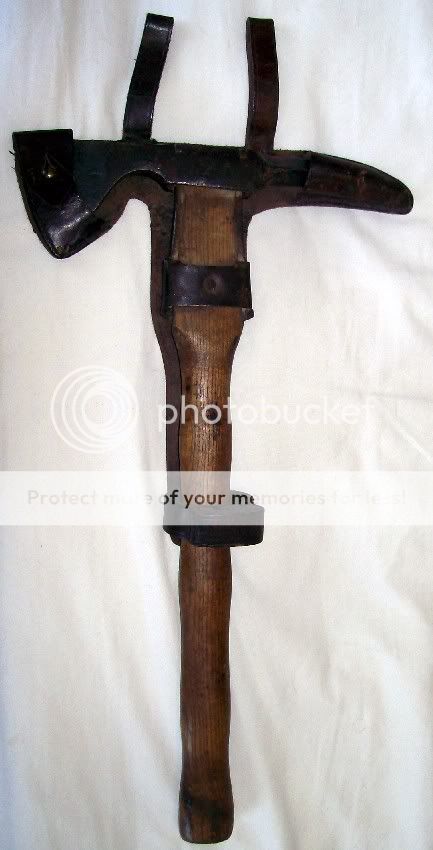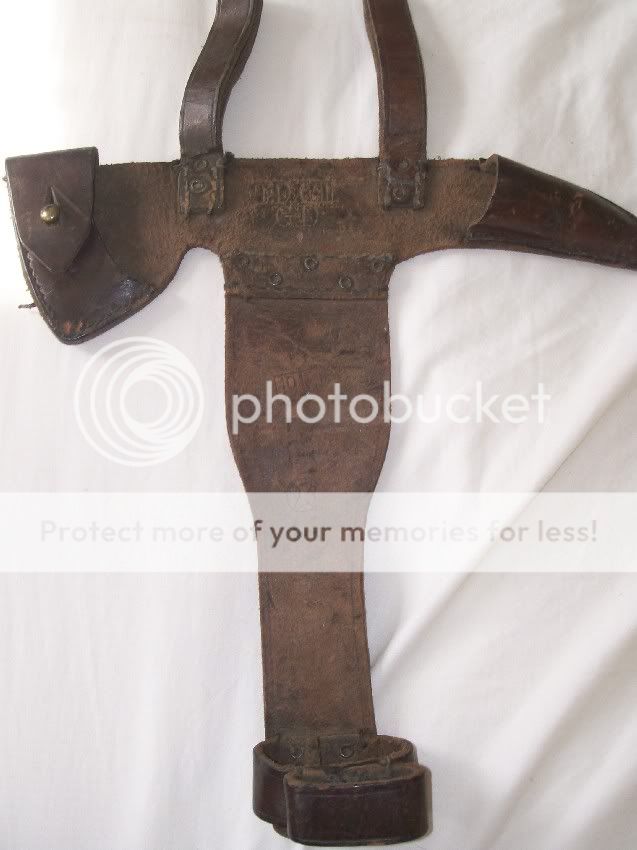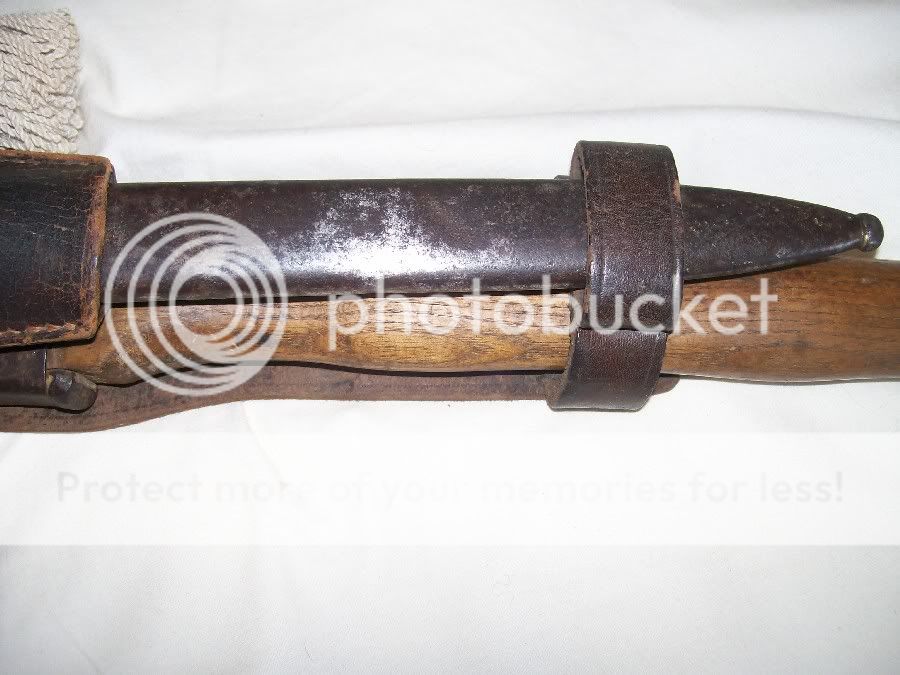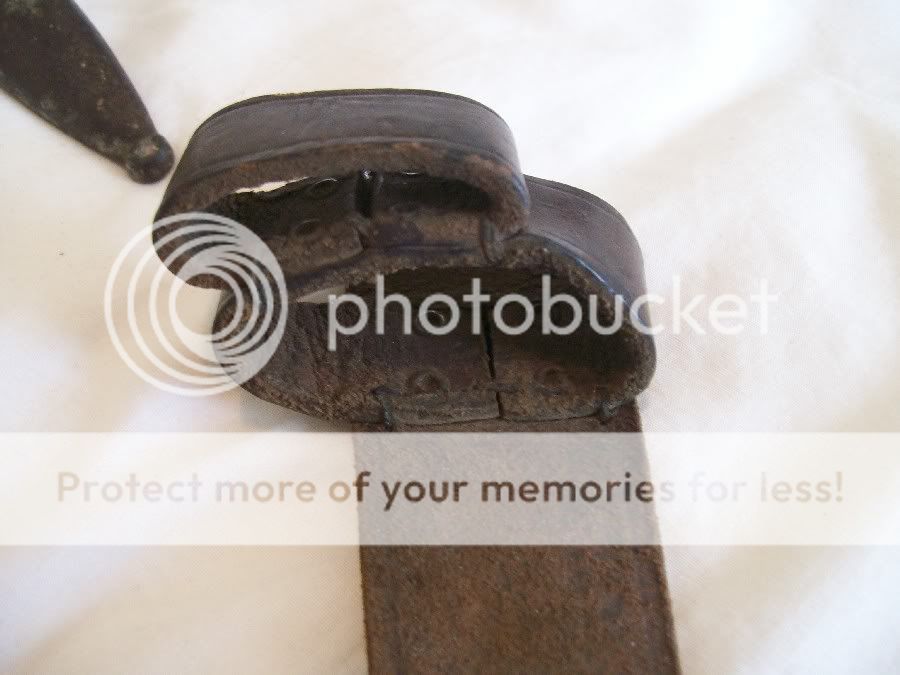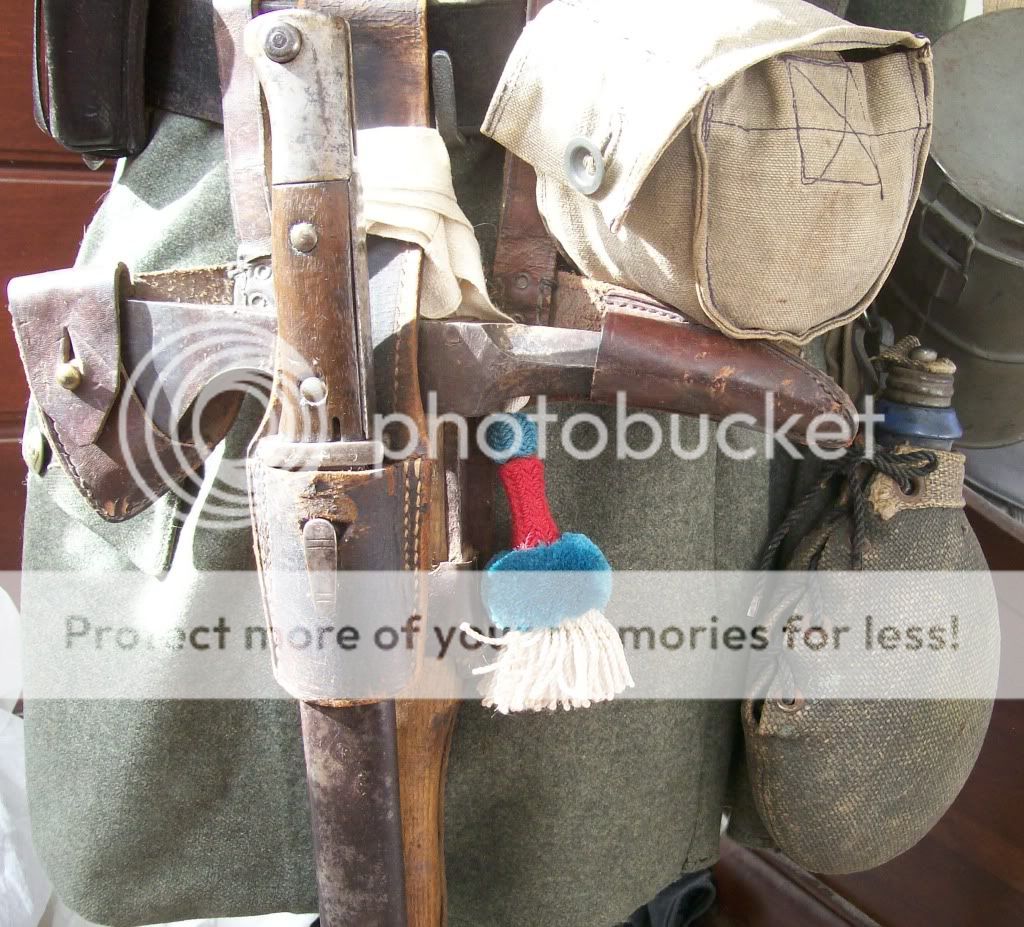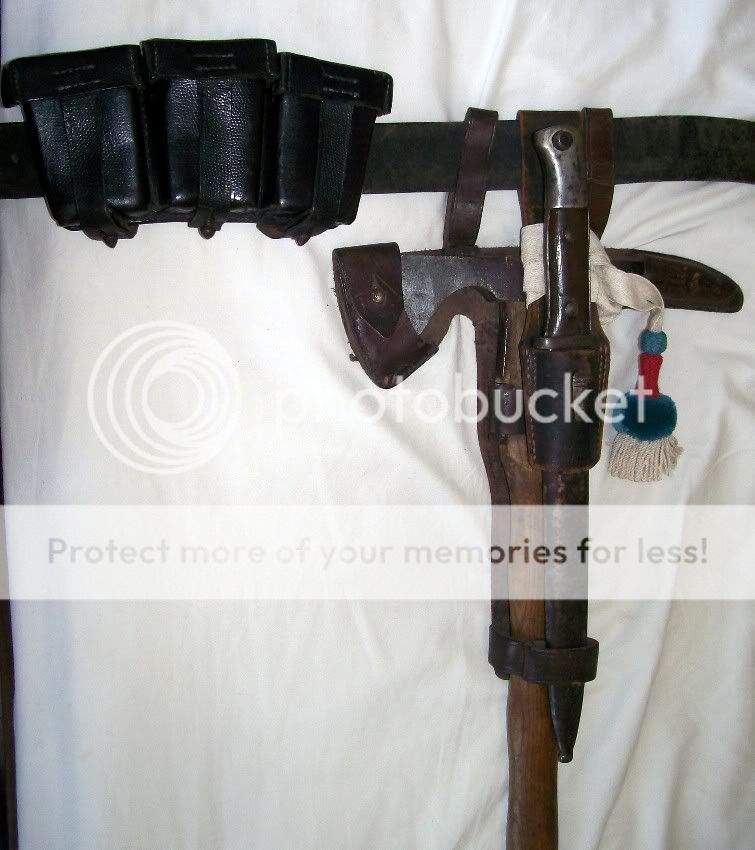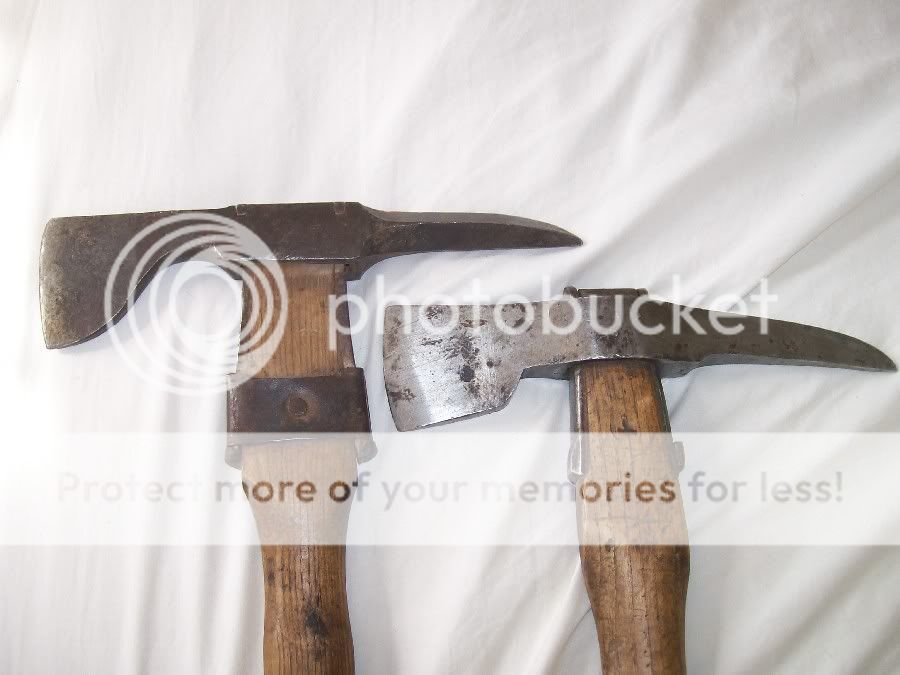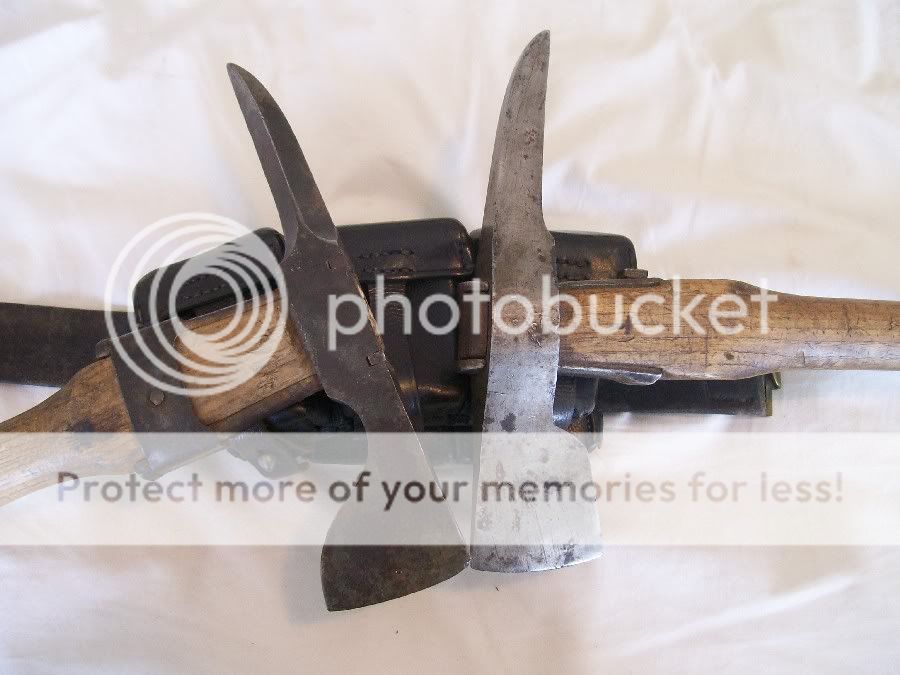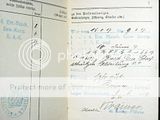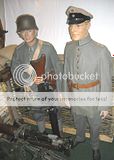I had some questions about the Machine Gun Crew's uniform during 1914-1915 (through the battle of Loos in September, 1915).
In a black and white photo of a WWI German Machine Gun Crew on the back of a cover of a book I own about the Battle of the Marne in 1914, the soldier on the left of the MG has his hand on his P08 holster; it looks like he has a bayonet:
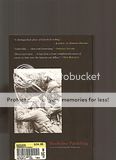
It looks like there is a small pouch of some sort near the bayonet of knife's handle.
Is this an ammunition pouch for the pistol???
Where exactly would he keep his P08 ammunition??
I can see a water bottle to the which is roughly at the right corner of the photo.
It looks like there is something between the bayonet / knife and water bottle, but I can't quite make that out.
Anyone know what that is??
I have some questions about the Machine Gun Crew's uniform during 1914-1915 (through the battle of Loos in September, 1915), but I will wait to ask those later.
Just two other short questions about the MG Crew's kit.
Were the MG crewmen during 1914-1915 issued a special entrenching tool made just for MG crews??
I saw this photo of a M1901 MG crew entrenching tool on the Schiffer books' website, but I do not know if this was used during WWI.
I don't see the soldier having it in the photo I posted above, but I guess there could be a number of explanations for why it is not shown in the photo:
M1901 MG Entrenching Tool:
http://themilitaryhistoryshop.uuuq.com/mgspade.htm
Also, the MG Crews in the early war period had a large cylindrical shaped water can which they carried to help cool the MG08.
This is different from the metal box shaped water cooler used later on in WWI.
Does anyone own one of these early war MG cylinder cans or a replica, and could please post some photos of it???
Finally, if anyone owns original or replica WWI drag straps (that's the belt the MG crewman is wearing across his back) , I would like to see some photos of those too.
Thanks.
In a black and white photo of a WWI German Machine Gun Crew on the back of a cover of a book I own about the Battle of the Marne in 1914, the soldier on the left of the MG has his hand on his P08 holster; it looks like he has a bayonet:

It looks like there is a small pouch of some sort near the bayonet of knife's handle.
Is this an ammunition pouch for the pistol???
Where exactly would he keep his P08 ammunition??
I can see a water bottle to the which is roughly at the right corner of the photo.
It looks like there is something between the bayonet / knife and water bottle, but I can't quite make that out.
Anyone know what that is??
I have some questions about the Machine Gun Crew's uniform during 1914-1915 (through the battle of Loos in September, 1915), but I will wait to ask those later.
Just two other short questions about the MG Crew's kit.
Were the MG crewmen during 1914-1915 issued a special entrenching tool made just for MG crews??
I saw this photo of a M1901 MG crew entrenching tool on the Schiffer books' website, but I do not know if this was used during WWI.
I don't see the soldier having it in the photo I posted above, but I guess there could be a number of explanations for why it is not shown in the photo:
M1901 MG Entrenching Tool:
http://themilitaryhistoryshop.uuuq.com/mgspade.htm
Also, the MG Crews in the early war period had a large cylindrical shaped water can which they carried to help cool the MG08.
This is different from the metal box shaped water cooler used later on in WWI.
Does anyone own one of these early war MG cylinder cans or a replica, and could please post some photos of it???
Finally, if anyone owns original or replica WWI drag straps (that's the belt the MG crewman is wearing across his back) , I would like to see some photos of those too.
Thanks.

